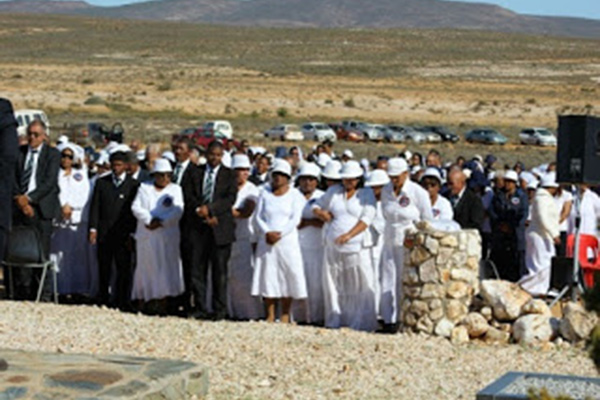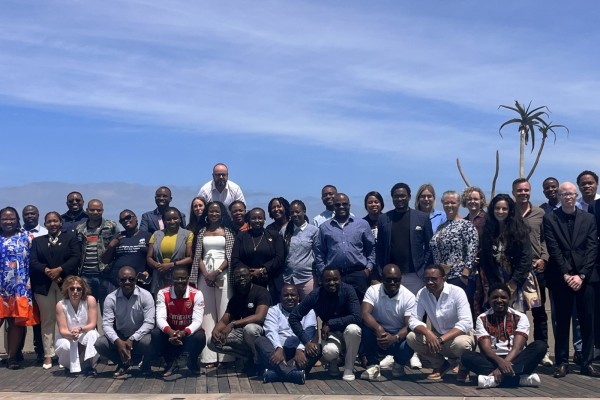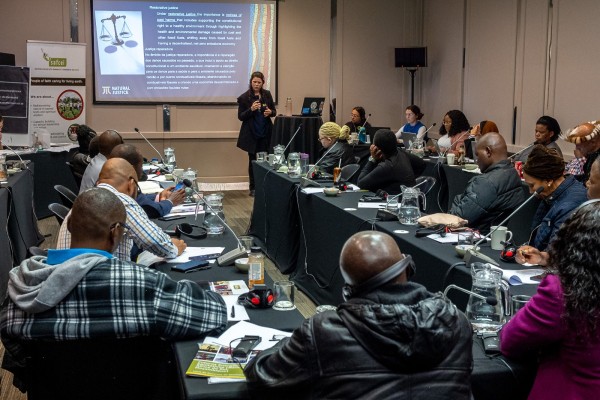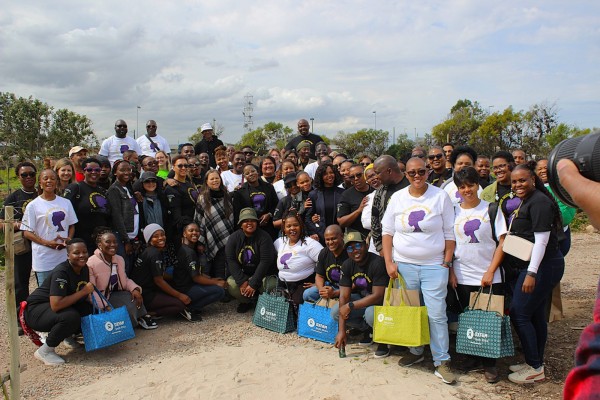
A reflection by NJ’s Indigenous Fellow, Yvette le Fleur
The month of May was approaching, and as a Griqua (Khoisan) it is customary to start planning your cultural and spiritual pilgrimage towards the northern part of the Western Cape province of South Africa, to the sacred farm called, Ratelgat. Griqua legend has it that the Paramount Chief Andrew Abraham Stockenstrom Le Fleur I, the founder of the Griqua National Conference (GNC), walked in the region on a very hot summer’s day. He was thirsty and could find no water in this semi-arid dessert. He then prayed to God for water. God instructed him to follow the trail of the ratel to a hole with water. Therefore he named this piece of land, “Ratelgat” (honey badger hole).
For Griqua, this historical farm is of utmost spiritual and cultural significance. It is this sacred territory to which our ancestors in the early twentieth century escaped from the harsh impacts of colonialism, under the leadership of the then Paramount Chief A.A.S Le Fleur I. They sought out this farm to protect our indigenous identity, foster our culture and to maintain our hard fought independence as an indigenous community.
However, this land was not really suitable for livelihood purposes: the lack of fresh water and, suitable grazing lands along with poor agricultural soil, hampered the possibility of economic developmental projects. Furthermore, during the early twentieth century Le Fleur’s inability to get access to funding from the colonial government institutions to buy this farm for the community furthermore discouraged him and his community. That state of affairs eventually led to their decision to abandon the farm temporarily in 1938. After they left, it was subsequently transferred to colonial ownership.
In 1994, with the dawn of the new constitutional dispensation in South Africa, the GNC, under the leadership of Paramount Chief A.A.S. le Fleur II, started to negotiate with the new democratic government to buy back the Ratelgat farm for the community. In May 1999, we acquired the farm, in the name of the Griqua National Conference Development Trust, through the post-apartheid land reform programme. It has subsequently also been declared a provincial heritage site.
For us the acquisition of this piece of land is not only an inheritance in the land itself but even more significant to the Griqua, is the inheritance of the spirit of our ancestors; who could survive through very difficult circumstances the onslaught of colonialism on this very arid piece of land in the heart of the succulent Karoo. Also quite remarkably, this semi-arid vegetation includes 133 endangered succulent plant species adapted to survive the dry climate conditions. Thus, today this farm has spiritual, cultural, heritage and ecological value for the Griqua.

The Griqua community come from across South Africa to undertake the pilgrimage to Ratelgat and to pay tribute to, and to commemorate, the legacy of our ancestors, now under the leadership of Paramount Chief Alan Andrew le Fleur.
This year I too, once again took the pilgrimage to Ratelgat. I arrived at the farm early on Saturday 14th May. The weekend’s celebrations commenced in the traditional manner; we all gathered together in prayer to give thanks to God for keeping everyone safe on the road and asked God to bless the weekend ahead.

We then moved on to the customary greeting practice of the Griqua. This century old practice entails that we form a circle and then walk inside the circle greeting each and every one by looking them in the eye and shaking their hand (“Kringgroet”).
The rest of the day was focused on cultural activities, such as the indigenous games, and later towards the evening the young people provided entertainment through performances of the dance called ‘Rieldans’ (‘ghabara’), which is a traditional Khoi-Khoi dance. The evening ended with some traditional food prepared at the Lapa (kookskerm).
The Sunday morning commenced with an early morning prayer session to spiritually prepare for the day ahead. Then everyone left the cultural area and proceeded to the sacred sites. We first visited the ancestral graveyard in commemoration of their legacy. The second sacred sight visited, and where the main ceremony took place, is the monument site. This site also contains the grave of our previous paramount chief Andrew Abraham Stockenstrom Le Fleur II. The celebration of this weekend also commemorates the birth of the latter as he was born on 11th May 1923.

The ceremony consists of various speakers sharing old Griqua stories, remembering the ancestors and the chiefs, as well as sharing their sentiment about the day. The ceremony closed by moving closer to the monument to kneel around it, while the ‘vog’ (respected elders who intercede between God and the community) communicate with God through prayers. We believe that prayers given on this day and on this site are very powerful and bring the Griqua great blessings.
This pilgrimage left me with a feeling of great satisfaction and a sense of well-being. The proximity to God and my ancestors, and the reminder of the legacy they have left behind, gave me renewed energy and courage.
















